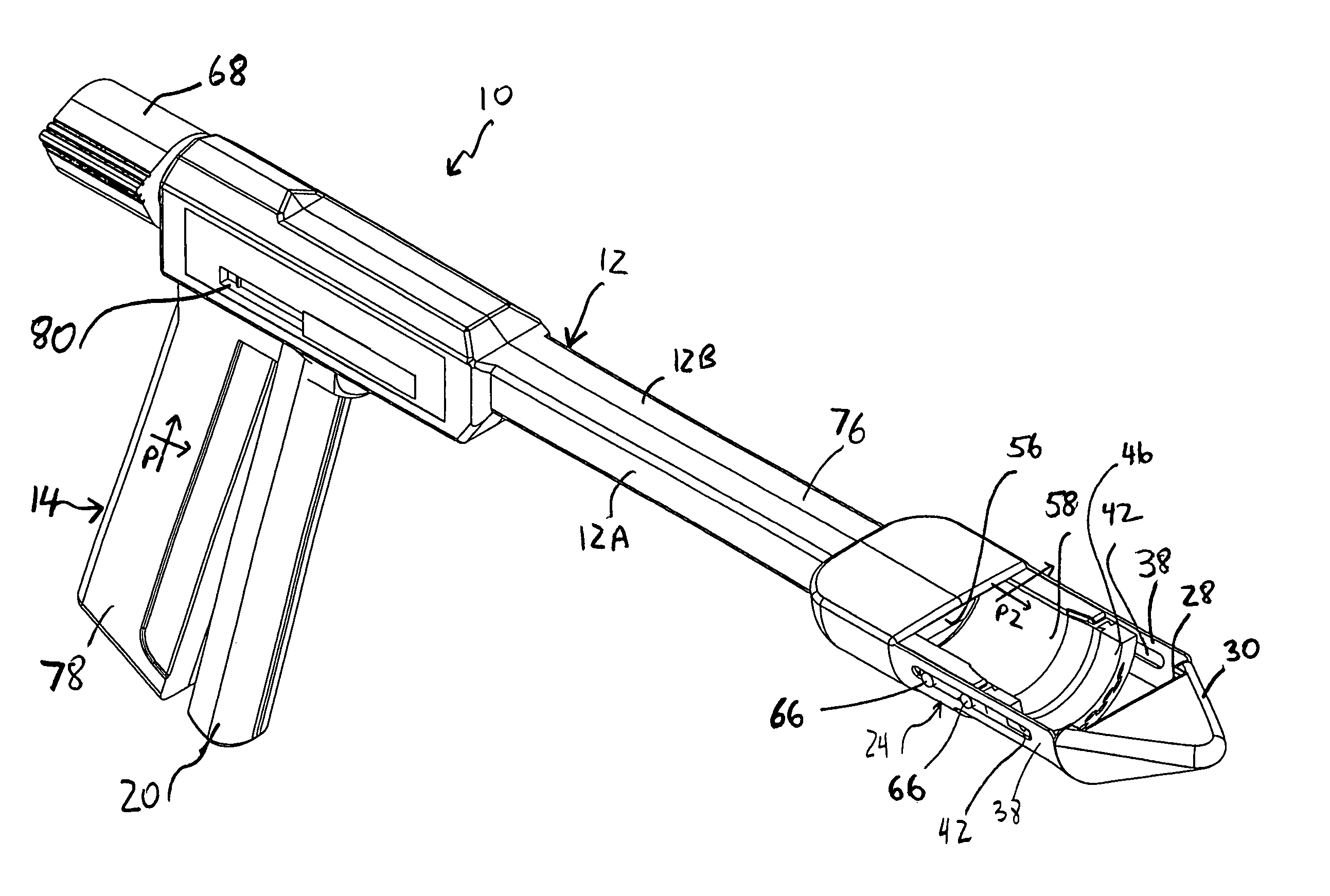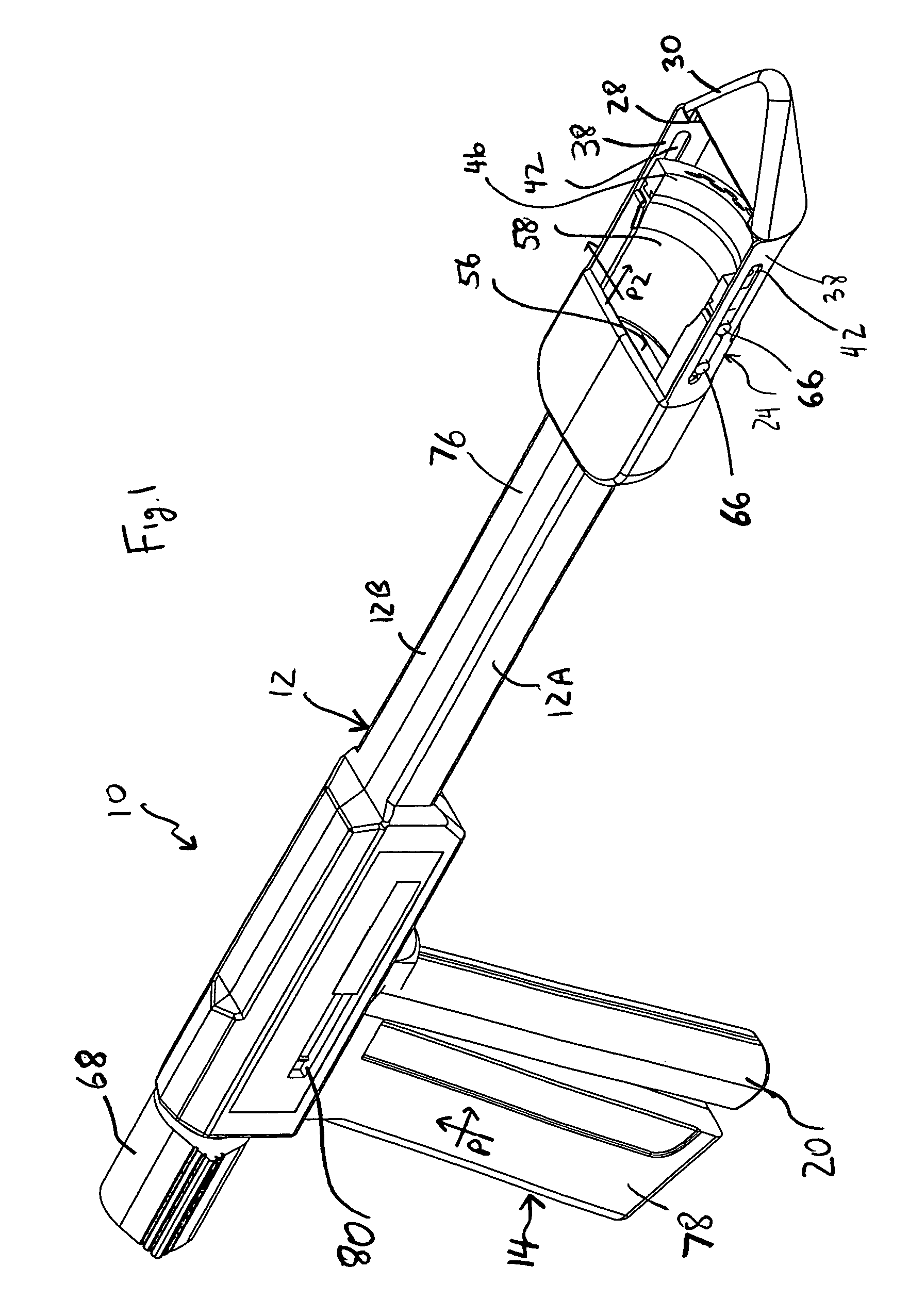Stapling apparatus having a curved anvil and driver
a stapling device and driver technology, applied in the field of surgical staplers, can solve the problems of limited amount of hemorrhoidal tissue excised, difficult and manual labor of surgeons, and the inability to easily monitor the amount of purse-string sutures drawn, and achieve the effect of less likely to produce vaginal injury
- Summary
- Abstract
- Description
- Claims
- Application Information
AI Technical Summary
Benefits of technology
Problems solved by technology
Method used
Image
Examples
Embodiment Construction
[0053]The present invention is a novel surgical instrument particularly, but not exclusively, suited for the removal of tissue from a human patient. More particularly, the invention concerns the use of a stapling instrument for the removal of anorectal tissue to treat hemorrhoids, mucosal prolapse, polyps, rectocele and obstructive defecation.
[0054]Referring now to the drawings wherein like reference characters designate identical or corresponding parts throughout the several views, and more particularly to FIGS. 1–4, a stapling instrument in accordance with the present invention is designated generally by the reference numeral 10 and includes a rigid body 12, a handle 14 movable relative to the body 12 in a manner described below, an elongate fixed jaw part 16 fixed in position relative to the body 12 and an elongate actuating jaw part 18 arranged at least partially within and movable relative to the body 12 and fixed jaw part 16. A trigger 20 is attached to the handle 14 for actua...
PUM
| Property | Measurement | Unit |
|---|---|---|
| curvature | aaaaa | aaaaa |
| displacement | aaaaa | aaaaa |
| circumference | aaaaa | aaaaa |
Abstract
Description
Claims
Application Information
 Login to View More
Login to View More - R&D
- Intellectual Property
- Life Sciences
- Materials
- Tech Scout
- Unparalleled Data Quality
- Higher Quality Content
- 60% Fewer Hallucinations
Browse by: Latest US Patents, China's latest patents, Technical Efficacy Thesaurus, Application Domain, Technology Topic, Popular Technical Reports.
© 2025 PatSnap. All rights reserved.Legal|Privacy policy|Modern Slavery Act Transparency Statement|Sitemap|About US| Contact US: help@patsnap.com



